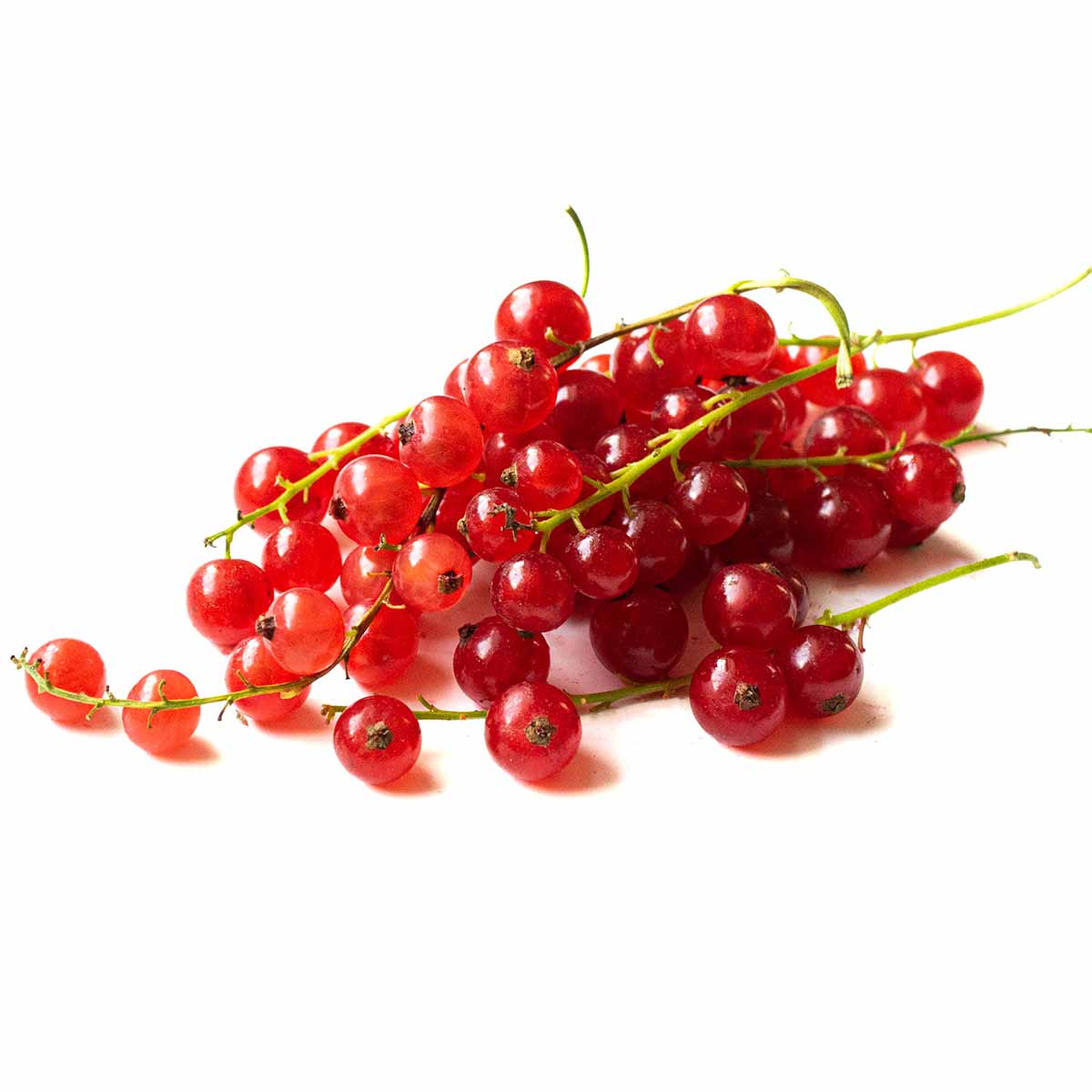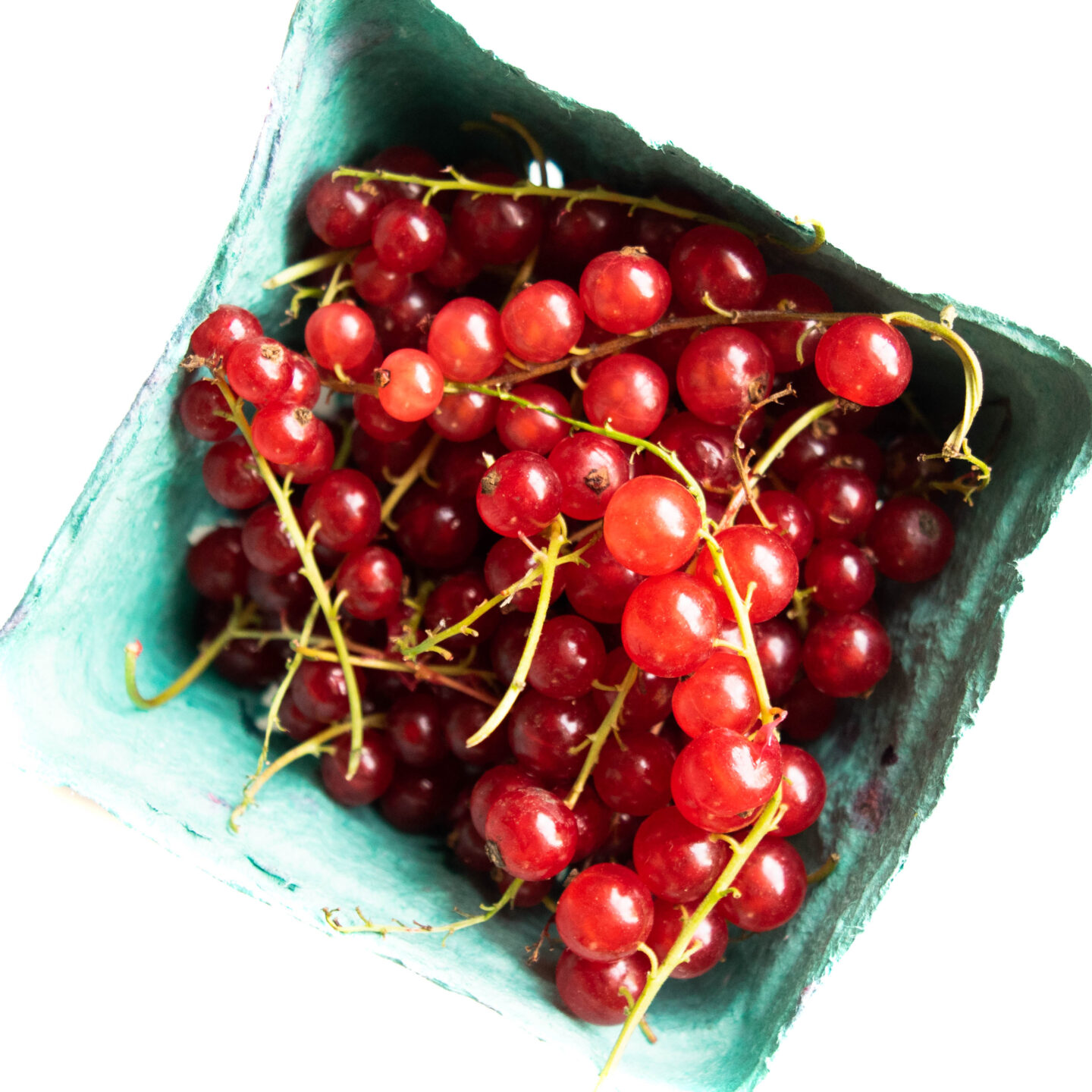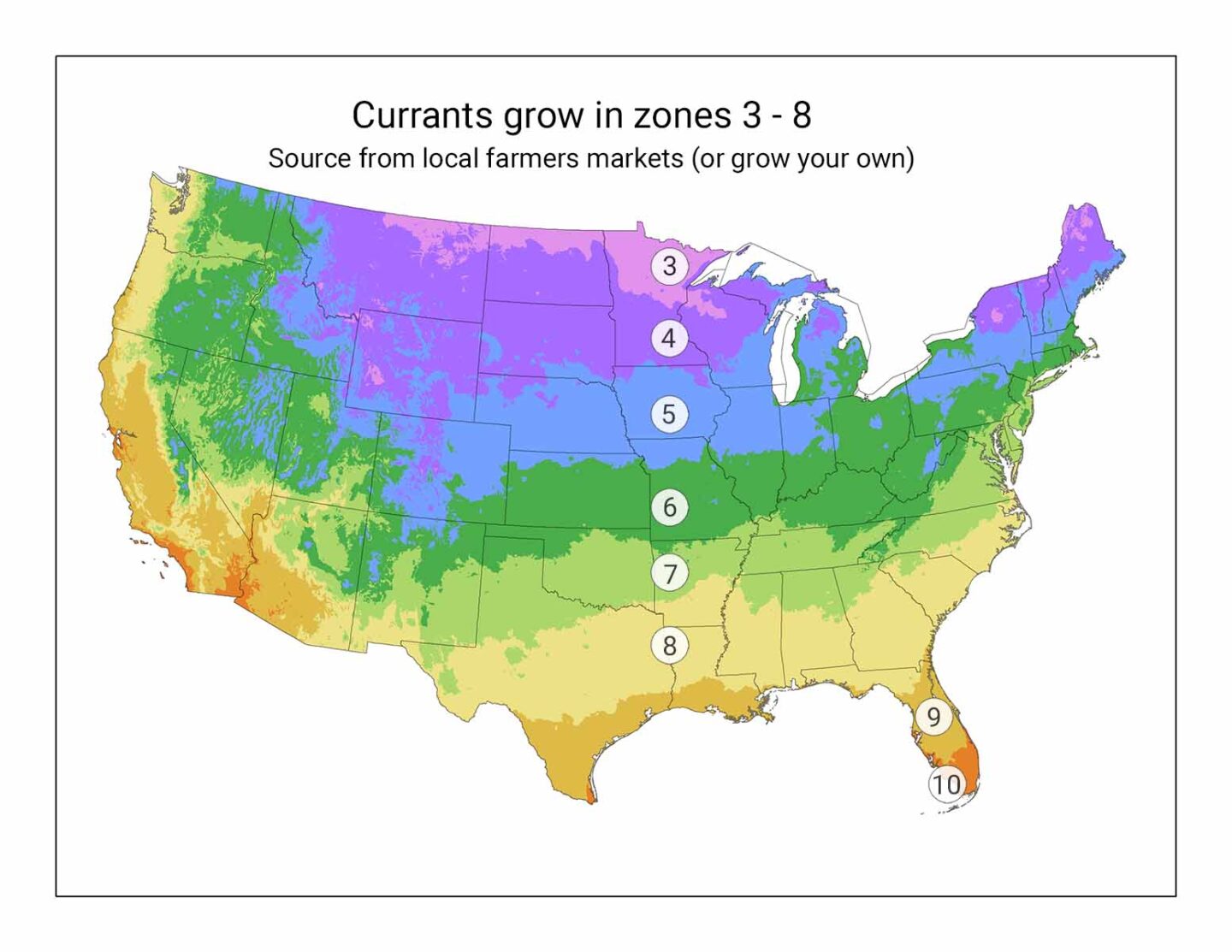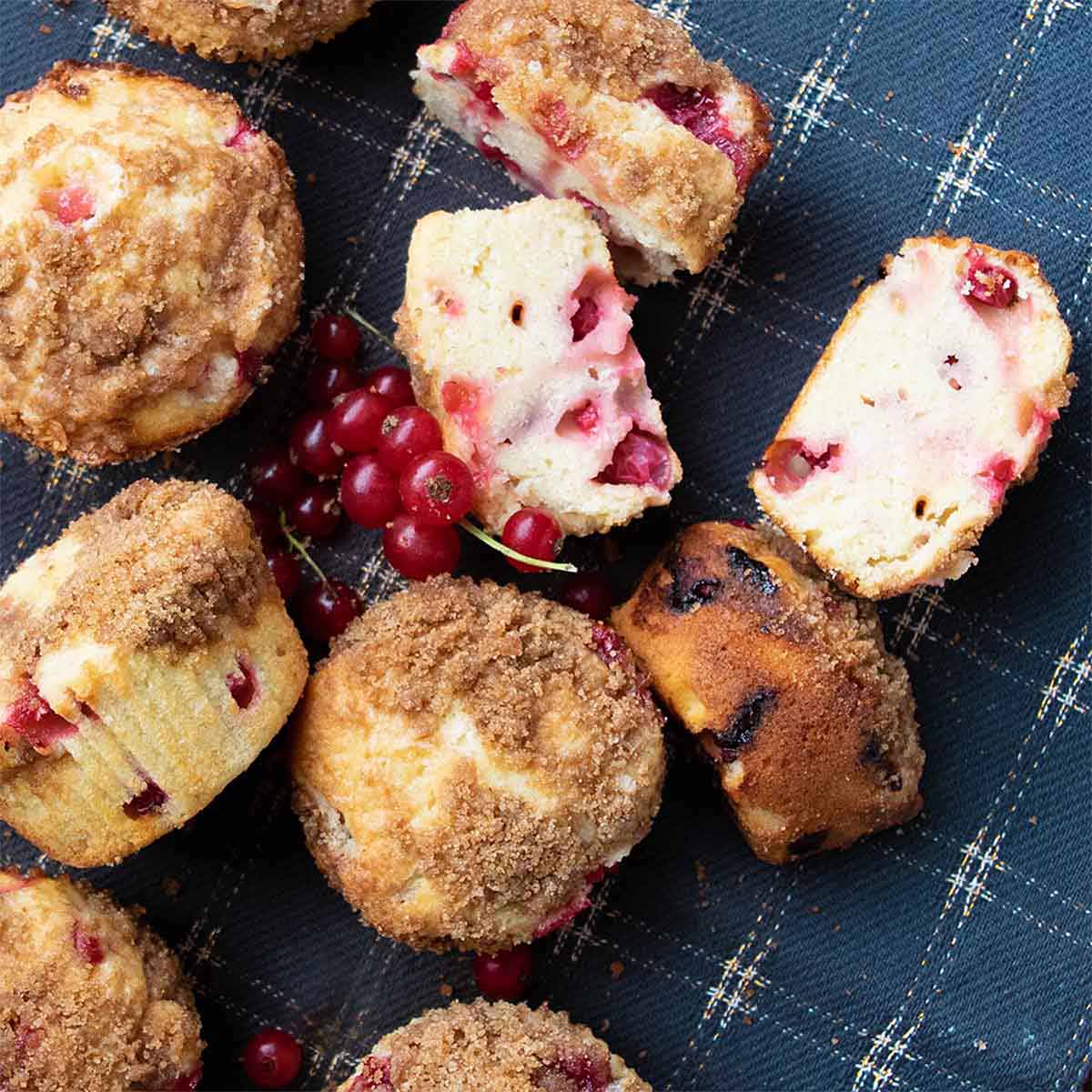
Season
Currants are in season during the summer months of June, July, and August. Depending on the climate and specific variety:
- Red & white varieties tend to ripen earlier than black currants, sometimes as early as late-May depending on the climate and weather that year. The harvest often lasts 2-4 weeks for each variety
- Black currants tend to ripen a few weeks later than the red and white ones. The harvest also lasts 2-4 weeks.
For reference, I've found them at the end of July / beginning of August in the Chicago Area from growers in USDA zone 6.
Jump to:
Varieties: black vs red vs white currants
All currant varieties are about the size of large peas, slightly smaller than cranberries. They are also very tart, just like cranberries, but are juicy when raw (unlike cranberries, which are hard until they are cooked).
All varieties of currants taste very tart, astringent, and slightly earthy or herbal. Most people don't seek them out for fresh eating, instead using them to cook or dry (similar to cranberries). Black currants are the sweetest (but still incredibly tart), while red are the tartest.
Each currant fruit also has a little crunchy seed inside (like seeded grapes) that's edible. The seeds soften when cooked - making them unnoticeable (speaking from experience here!).

Red currants
Red currants are the tartest variety. Many people aren't crazy about their raw flavor which is incredibly tart and tannic, but really enjoy them in jam, sauces, and baked goods.
When cooked, red currants have a sweet-tart flavor, similar to cranberries. Even simply throwing them into a quick bread and baking is enough to tame their tart, astringent flavor.
White currants
The white and pink varieties taste a little sweeter and a little less tart. But don't be fooled - they are still very tart when eaten raw. Cooking them in jams, sauces, and baked goods mellows out that tart flavor, just like with red currants.
Black currants
Black currants taste tart, earthy, tannic, herbal, sometimes even medicinal. Their unique flavor profile is used to make Creme de Cassis liquor, and pairs well with gamey meats like lamb and duck.
Where to buy currants
I don't think I've ever seen fresh (or frozen) currants at a grocery store due to low popularity and lack of commercial production.
However, they do grow well throughout most of the country, so you might have luck finding a source at the farmers market. When you do find them, they have a short 2-3 week season.

It's a specialty fruit that doesn't have the demand as other fruits, so large farmers market vendors often don't grow them. When I do find a vendor selling them, they are often on the smaller side and grow them because they personally like them.
If they are only growing one variety, they will likely only have them for a 2-3 week window at the farmers market, due to their short harvest time. So if you find them, buy as many as you can handle! Talk to the vendor to find out if they will have them for another week or two, or if this is your last chance.
You can also try growing them yourself and get fruit in 1-3 years. They are hardy down to zone 3 (zone 3-8), can handle shade, as well as wet-clay soil.
Selection & storage
Look for bright, shiny, slightly translucent fruit still attached to the stem. Store them in the fridge, still attached to their stems (they don't last long after they are removed from the stems). They should last 3 days or a week if you get lucky.
You can also freeze them by placing them whole, on a cookie sheet in the freezer - this keeps them from freezing together in large clumps. Let them freeze in a single layer for a few hours, then transfer them to an airtight container and place back in the freezer.

How to use them
Fresh
While currants are quite tart when fresh, that characteristic lends itself well to a few specific uses:
- In a vinaigrette or on a salad
- Candied in an egg wash, and used on top of cakes, parfaits, or yogurt
- Added to cocktails
Cooked
Currants are prized for their characteristics when cooked down. They get a sweeter, richer flavor, and their pectin helps thicken sauces and jams.
- Sauce for gamey meat like venison, duck, and lamb
- Jams and jellies due to their high pectin content (and these pair well with cheeses)
- In ice cream and sorbets (whole or as a sauce)
- Added to pie filling (like a pear or apple pie to add tartness and gelling properties)
- Quick breads and muffins
Dried
Dried currants at the store are actually dried zante grapes, and not actually currants. Confusing, I know! You are very unlikely to find a source of dried currant berries, unless you make them yourself.
If you see a recipe that calls for dried currants, it is very likely the zante (grape) currants.
Substitutions
Currant recipes aren't very abundant, but you can find recipes using other fruit and substitute in the currants you have on hand.
Currants vs cranberries
Currants can be swapped with cranberries as they share several characteristics:
- Very tart profile. Cranberries exhibit some bitterness than currants typically don't have, however.
- Similar size - making them fairly interchangeable in baking recipes
- High pectin - both are high in pectin, so they will have similar gelling qualities in pies, jams, etc.
Other fruit options
You can also use any quickbread or muffin recipe that calls for blueberries, raspberries, or even diced apples. The currant substitution will make a nice tart addition (similar to cranberries).
Try substituting currants in place of other tart berries on a salad, especially if that salad has a sweet dressing or is paired with a lot of fatty cheese.
Lastly, sauces for meat that call for tart fruit can be interesting with a full or partial substitution with currants, especially the herbal notes of black currants.
Your opinions
Have you tried currants? What kind and what did you think? Share your opinions and tips for other readers.

Leave a Reply